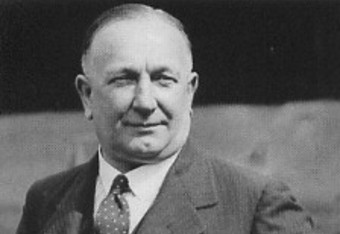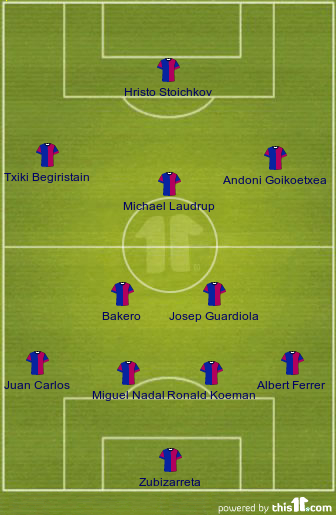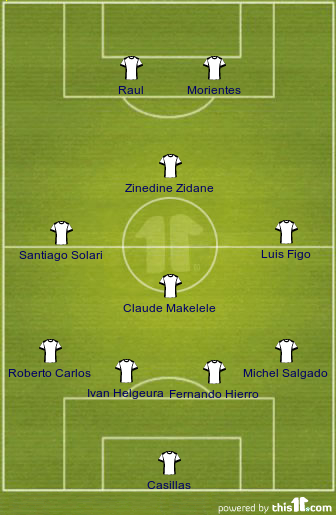What a fantastic year 2011 has been,Manchester United finally knocking off Liverpool of their "perch" by claiming their 19th English League title. Barcelona continued their dominance by winning the Champions League and the Club World Cup. But this year one certainly didn't see revolutionary tactics,but there were many a interesting tweaks and innovations. Barcelona with their 3-4-3 and Napoli's brilliant counter attacking style were some examples.
So if you haven't been following The False 9 for the past 8 months or you once again want to brush up your memory on how a media punta actually works or why the Libero may be the next big thing in football,then have a read.
May
May saw the start of our Rough Diamonds series where we look at young players who have the potential to be World-Class footballers when they reach their prime. This series was also featured on A Football Report's The Best of Football Writing in 2011.
So if you haven't been following The False 9 for the past 8 months or you once again want to brush up your memory on how a media punta actually works or why the Libero may be the next big thing in football,then have a read.
May
May saw the start of our Rough Diamonds series where we look at young players who have the potential to be World-Class footballers when they reach their prime. This series was also featured on A Football Report's The Best of Football Writing in 2011.
Then as a preview of the Champions League final we did a piece called The Champions League Final If I Was God. Sadly for Manchester United fans the match didn't turn out the way it was described in the article.
June
June saw us get serious with The Makelele Role,Javier Hernandez-Rebirth Of the Poacher and The Libero-The Next Tactical Innovation.
We also mulled whether the likes of Andy Carroll and QPR will be a success in 2011-12 in Andy Carroll-The 35M Throwback and QPR-Will They Survive?
Then we previewed Argentina's chances at the Copa America and this article was featured on The Guardian's Favorite things this week.
Next we threw an insight what sort of roles Ashley Young and Nuri Sahin will play at their new clubs.
Finally we tried answering the age old question of whether Barcelona can do it on a cold December night at Stoke
July
We tried answering another eternal question,Why England Never Win?
Also we did some analyisis on if Argentina are the new England?
August
August saw the start of the football season,so we were busy doing Match Previews and Reviews which are of little use now.
So the only article which you people may interested in would be the The Death Of The Box To Box Midfielder
September
We ran out of steam in September with only 3 articles,but Jose Mourinho would be very interested in this one-How To Beat Barcelona?
October
In the early parts of the season Manchester United conceded a lot of goals,read a comprehensive analysis on how they were conceded.
Also take a look at how Levante found themselves at the top of La Liga.
November
November was an exciting month for us,as we were nominated for the NOPAs.Sadly we didn't win the award.
We started out Legends series and onto more serious stuff we discussed how the Future could be strikerless for Spain.
Another article which was quite popular was Mikel Arteta,Media Puntas and The False 9s.
For the people who hate football tactics and still think Messi is just a number 10 and not a false 9 we recommend Football and Alcohol and When Fergie Lost by 9!.
December
Start of December saw us previewing the El Clasico with a series of articles which included Mesut Ozil-From a German Heart to a Spanish Dance.
And we ended the year with Oriol Romeu-David Luiz's Saviour? and In Praise of Attacking Fullbacks.
Have A Happy 2012!
Next we threw an insight what sort of roles Ashley Young and Nuri Sahin will play at their new clubs.
Finally we tried answering the age old question of whether Barcelona can do it on a cold December night at Stoke
July
We tried answering another eternal question,Why England Never Win?
Also we did some analyisis on if Argentina are the new England?
August
August saw the start of the football season,so we were busy doing Match Previews and Reviews which are of little use now.
So the only article which you people may interested in would be the The Death Of The Box To Box Midfielder
September
We ran out of steam in September with only 3 articles,but Jose Mourinho would be very interested in this one-How To Beat Barcelona?
October
In the early parts of the season Manchester United conceded a lot of goals,read a comprehensive analysis on how they were conceded.
Also take a look at how Levante found themselves at the top of La Liga.
November
November was an exciting month for us,as we were nominated for the NOPAs.Sadly we didn't win the award.
We started out Legends series and onto more serious stuff we discussed how the Future could be strikerless for Spain.
Another article which was quite popular was Mikel Arteta,Media Puntas and The False 9s.
For the people who hate football tactics and still think Messi is just a number 10 and not a false 9 we recommend Football and Alcohol and When Fergie Lost by 9!.
December
Start of December saw us previewing the El Clasico with a series of articles which included Mesut Ozil-From a German Heart to a Spanish Dance.
And we ended the year with Oriol Romeu-David Luiz's Saviour? and In Praise of Attacking Fullbacks.
Have A Happy 2012!
















